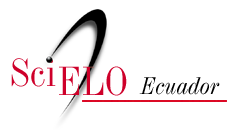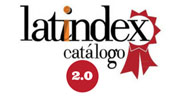Biocoagulación de aguas residuales de industria textilera mediante extractos de Caesalpinia spinosa
DOI:
https://doi.org/10.29019/enfoqueute.v6n1.50Palabras clave:
coagulación, floculación, tara, tanino, turbidezResumen
(Recibido: 2014/12/06 - Aceptado: 2015/03/24)
La industria textil en Ecuador es todavía motivo de preocupación debido a la inadecuada disposición de sus residuos en los suministros locales de agua. La presente investigación fue llevada a cabo en Pelileo (Tungurahua - Ecuador) donde el agua residual de textileras son descargadas a los cuerpos de agua. Una solución ambientalmente amigable para tratar aguas residuales de textileras con alta carga orgánica es aquí evaluada: un proceso de remediación de biocoagulación fue realizado utilizando extractos de la planta Caesalpinia spinosa conocida como guarango o tara. Se determinó que utilizando extractos de C. spinosa para tratar agua residual tiene el mismo efecto estadístico que aplicando un coagulante químico (policloruro de aluminio 15%). Zeolita activada adsorbió el color residual del agua tratada para obtener una remoción de turbidez más del 90%. Un modelo matemático mostró que la remoción de turbidez entre 50-90% puede obtenerse aplicando 25-45 g/L de extractos de guarango y zeolita por cada 700 mL de agua residual de textileras. La coagulación natural utilizando extractos de C. spinosa produjo 85% menos lodo que el policloruro de aluminio, y removió altos contenidos de materia orgánica en el agua residual (1050 mg/L) en un 52%.
Descargas
Publicado
Número
Sección
Licencia
Los autores retienen todos sus derechos (© copyright).
- Los autores retienen sus derechos de marca y patente, y también sobre cualquier proceso o procedimiento descrito en el artículo.
- Los autores retienen el derecho de compartir, copiar, distribuir, ejecutar y comunicar públicamente el artículo publicado en Enfoque UTE (por ejemplo, colocarlo en un repositorio institucional o publicarlo en un libro), siempre que se dé el reconocimiento de su publicación inicial en la revista Enfoque UTE.
- Los autores retienen el derecho a hacer una posterior publicación de su trabajo, de utilizar el artículo o cualquier parte de aquel (por ejemplo: una compilación de sus trabajos, notas para conferencias, tesis, o para un libro), siempre que indiquen la fuente de publicación (autores del trabajo, revista, volumen, número y fecha).
























